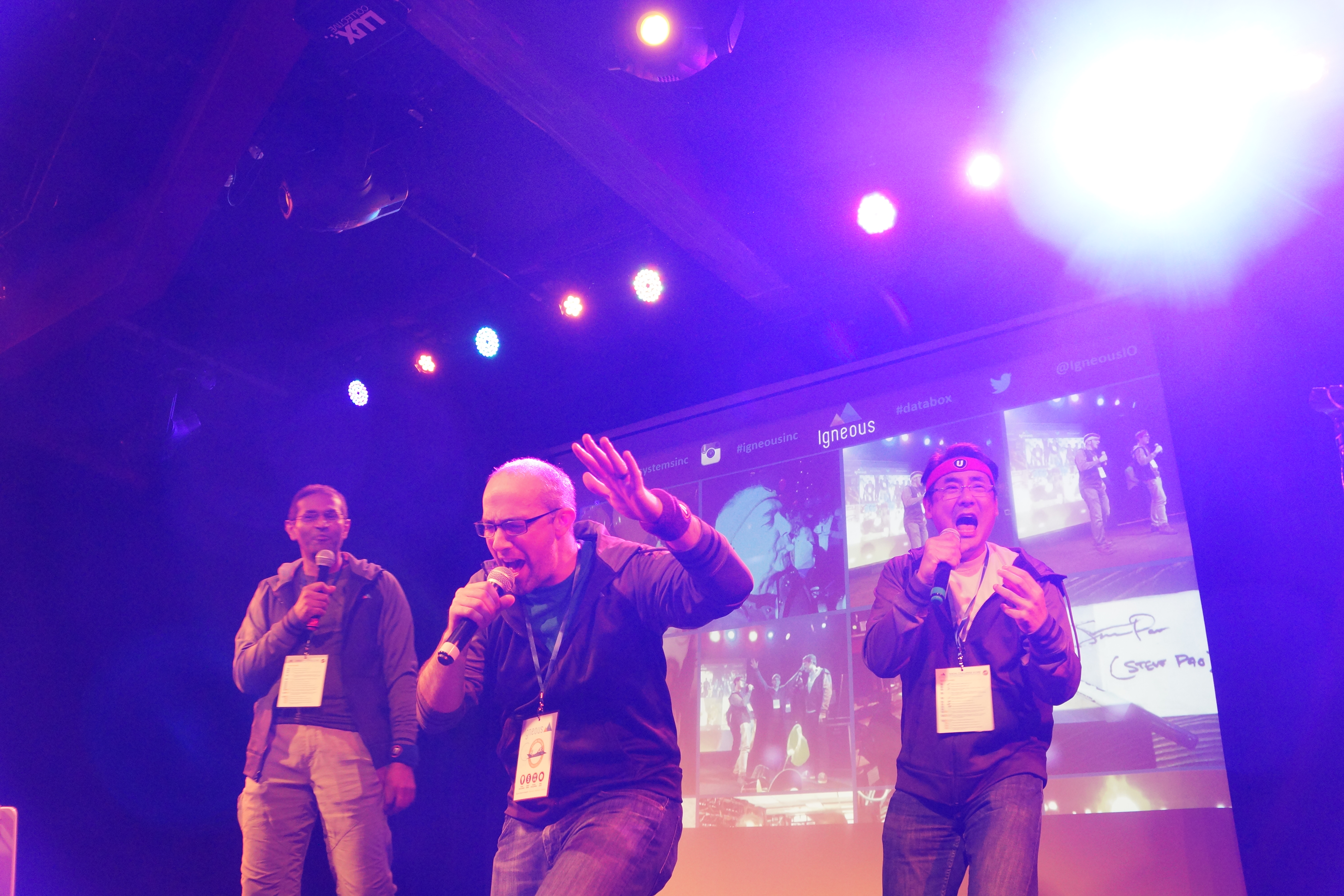How to Prevent Employee Burnout
HR professionals share their advice for minimizing worker stress and boosting retention.
Introduction
They sit at their workstations with furrowed brows, worrying they won’t make the next deadline. They yawn because the stress of overwork has caused them to lose sleep. They lash out at colleagues as tension and resentment build.
Sound familiar? “They” might include your workforce, your boss or even yourself. Employee burnout has reached record levels, experts say. And it’s sabotaging workplace retention. That was the finding of a 2016 survey of 615 HR professionals conducted on behalf of Kronos Inc. and Future Workplace. It pointed to unfair compensation, unreasonable workloads and poor management as chief contributors to the problem.
The impact on organizations can be significant. Burnout can result in lower productivity and engagement as well as higher absenteeism and turnover. But fortunately, it’s possible to bounce back from burnout—which the Mayo Clinic defines as a state of physical, emotional or mental exhaustion combined with doubts about one’s competence and work value. Here are some tips to help recharge your workforce and yourself.
Hold Walking Meetings
 A few months ago, I started leading my fellow HR technicians in short walking meetings outside our building, which provides a great change of scenery from screens, desks and walls. By limiting these walk-and-talks to 20 minutes every other Tuesday, we take up less than half of 1 percent of our total work hours over two weeks. I make sure to have an agenda so we remain focused and productive while getting a break.
A few months ago, I started leading my fellow HR technicians in short walking meetings outside our building, which provides a great change of scenery from screens, desks and walls. By limiting these walk-and-talks to 20 minutes every other Tuesday, we take up less than half of 1 percent of our total work hours over two weeks. I make sure to have an agenda so we remain focused and productive while getting a break.
The four of us typically discuss any roadblocks we are encountering and how to overcome them. We also share updates on special projects and upcoming tasks with a little bit of coaching and mentoring added in.
I make sure to publicly recognize each team member for a contribution he or she has made in the preceding two weeks. The feedback has been very good, and engagement and communication have noticeably improved.
Leaders from other departments have noticed our strolls and want to join us. But I think this type of meeting is most effective for small groups.
—Matthew Ellis, HR technician, Berkeley County School District, Moncks Corner, S.C.
Relieve Stress
Take Mental Health Days
During a highly stressful and busy time, morale can decline. Encouraging employees to take a mental health day can help. Knowing their manager supports it might alleviate their apprehension over asking for time off and any fear they have about not being perceived as a team player.
Consider a small token of appreciation for their efforts—perhaps a gift card to their favorite coffee shop or restaurant—or buy the team lunch.
—Lindsey Garito, SHRM-CP, talent acquisition manager, WESTMED Practice Partners, Purchase, N.Y.
Value Vacations
Encourage employees to use their allotted vacation time. Run a report every year to ensure there aren’t any excessive balances. Offer mental health services, such as a robust employee assistance program. Add activities during company hours, such as a weekly social, that give employees a reason to leave their desks. Encourage managers to have discussions that address work/life balance.
—Barbara Moy, SHRM-CP, director, people operations, Nexonia, Toronto
Try At-Home ‘Hump Days’
Our organization makes a point to reward our team members each week with “Work-from-Home Wednesdays.” Working remotely isn’t a new engagement strategy, but making it a constant for every worker from the CEO to the front line offers “hump day” as a day of productivity and solidarity that allows everyone to take a break from the office bustle.
It shows that even in an agency setting where collaboration is key, we make time to decompress to ensure our highest caliber of work presents itself. As a bonus, we save dollars and hours as a workforce in gas and commutes, which is great for our wallets, our time management and our environment. We show our employees that we trust that they can manage their own time and, as a bonus, every Tuesday feels as exciting as a Friday. This also increases productivity and brain power and alleviates employee fatigue and engagement problems.
—Ashton Adair, director of culture and first impressions, Mojo Media Labs, Irving, Texas
Be Proactive
I experienced burnout as a college athlete. Now in the workforce, I have found that many of the principles for avoiding burnout can be applied to any setting. Being proactive is key. It is much harder to address the problem after it occurs.
As an athlete, I would have benefited from a coach who was more approachable, who could talk me through the difficulties I was facing. I was intimidated and felt that I would be judged and viewed as weak and incompetent if I revealed that I was struggling. Over time, these small feelings snowballed and resulted in career-ending burnout. I didn’t have the skills to cope with frustrations and the monotony of practice and workouts, and I wasn’t in an environment where I was comfortable seeking help. My burnout could have been prevented.
—Kelly Koier, senior recruiter, Integra Staffing & Search, Charlotte, N.C.
Promote Balance
Don’t just promote work/life balance, live it. We shut down early before holidays and have “unplugged” initiatives companywide. Each office has a designated “mindfulness space,” which often features a small water element, low lighting, cozy furniture and, most importantly, a technology-free spot to be by yourself.
We encourage active participation in mindfulness-related activities as well as provide company-paid subscriptions to mindfulness apps. Some locations offer yoga, guided meditation and mindfulness exercises such as Action for Happiness.
That said, we are also very clear with prospective hires about the demands of our work. My organization has 510 employees and is still in the startup phase. Being transparent about the amount of energy that will be required is key so that people can decide for themselves if they’re all in.
Preventing burnout is a responsibility to be shared by employees and company leaders. Both need to commit for it to work.
—Jeffrey Oliver, SHRM-CP, director, employee relations, Landmark Health, Latham, N.Y.
Adjust the Workload
Create Fair Workloads
HR needs to ensure that performance goals are communicated clearly to employees at the beginning of the year and reworked at appropriate intervals to meet business requirements. They must also help maintain optimum staffing. Fair distribution of job responsibilities will prevent employee burnout and improve retention.
—Vidula Padwal, SHRM-SCP, HR business partner, UBM India Pvt. Ltd., Mumbai, India
Monitor Scheduling
Our managers who schedule our traveling technicians all started as techs themselves. They understand the demands of the job and keep the lines of communication open with their teams. It comes down to them knowing when someone is struggling because he or she has been on the road too much or has had a rough patch dealing with demanding customers or repairs. That open dialogue allows the managers to schedule the techs a quiet week or give them an extra day in the office to decompress.
We might also bring them into HQ to meet with managers and other techs and interact with their colleagues.
—David Alice, HR generalist, MC Machinery Systems Inc., Elk Grove Village, Ill.
Don’t Add Stress
Include your team members in any decisions that are relevant to their work. Ignoring employees when making important choices relating to their assignments will negatively affect their commitment and will certainly lead to burnout. And don’t create stress by adding new assignments when workers are in the middle of a project.
—Mohammad Qais Momand, chief corporate services officer, Vision Financial Services, Kabul, Afghanistan
Weigh Priorities
If someone is approaching burnout, I would ask them “Do you know what your top two or three priorities are?” You’ve got to weigh your goals. If you have 10 goals and each gets 10 percent of your time, you probably need to rethink your approach.
One of our company’s guiding principles is the 80/20 rule, which we use to prioritize and manage work. That means spending 80 percent of your time on the 20 percent of your tasks that are deemed most important. Being crystal clear on your top priorities drives performance and prevents burnout.
If we understand that every task is not of equal value, then it’s easier to know how to spend your time. The 80/20 rule is such a big part of our culture that we talk about “What’s your 80?” It’s integrated into our nomenclature.
—Ellen Steele Kapoor, manager, talent management and leadership development, Illinois Tool Works Inc., Glenview, Ill.
Train Managers
HR should be training managers on how to keep employees engaged and motivated. Supervisors bear the responsibility for preventing employee burnout and improving retention because they control the employees’ workload. They create the climate or culture within their divisions. They’re responsible for their employees’ promotions and value-added contributions. If HR professionals spot red flags, such as high turnover, within certain departments, they have the responsibility to educate the leaders and provide them with the tools necessary to retain quality personnel. People will stay at companies forever if they are treated with respect and have the opportunity to grow and move up.
—Rita Winborne, SHRM-SCP, HR consultant, Charlotte, N.C.
Kill Arbitrary Rules
Don’t force all employees to come in at the same time. Some individuals work best at 8 a.m., while others are most productive at 10 a.m. If your operation allows for flexible scheduling, implement it right away! Make use of telecommuting. If workers can get reports done from the comfort of their homes (perhaps in their pj’s), don’t force them to battle traffic every day and come into the office in a business suit.
Consider automating repetitive tasks so that your employees can focus on the responsibilities that are most important and worthwhile. Finally, create a culture of transparency and trust. Motivate your employees to participate in organizational decision-making, and keep them informed of changes that affect their jobs.
—Jennifer Diaz, SHRM-CP, director of HR, World Evolve Inc., Miami
Solicit Ideas
Give employees a measure of control over their work. Allow flexible work schedules and deadlines that fit the task. Ask workers for input on how to get the job done better and faster. Ask if they have other ideas. Be sure to delegate tasks appropriately. If an employee has a major deliverable due that takes her away from day-to-day responsibilities, can other team members pitch in for the short term?
—Sasha Goldfarb-Rivera, senior HR analyst, Sparta Systems, Hamilton, N.J.
Cultivate Fairness and Balance
1. Build an employee engagement plan. Start by conducting an employee survey. This alone will assist HR with the direction of solutions.
2. Implement a realistic job design. Work with managers to develop job rotations, enrichment opportunities and methods for streamlining positions’ tasks.
3. Create a compensation analysis for fair and competitive pay. If compensation is out of line, either internally or externally, it is up to HR to communicate the consequences.
4. Develop work/life balance values. HR can influence the values of the organization. Therefore, help leaders understand the importance of personal time and how the organization can support a “work hard/play hard” motto.
—Lydia Freeman, senior HR consultant, Employer Flexible, Plano, Texas
Build Relationships
Encourage Friendships
Developing meaningful and rich interpersonal relationships among colleagues will help people feel connected to one another and engaged in their work. Simply put, employees who know and like one another are more energized and motivated, and therefore less likely to burn out and depart the organization. In today’s litigious world, we are often afraid to address the relationship component of work and instead attend only to the operational aspects covered by policies and procedures. That’s a mistake. Organizations that are courageous enough to foster friendships in turn develop an environment that people want to join, remain in and promote to others.
—Melanie Peacock, HR consultant/owner, Double M Training and Consulting, Calgary, Alberta, Canada
Get Personal
 The restaurant industry has a high turnover rate, so we continually coach and teach our staff to keep them motivated. It’s our leaders’ responsibility to get to know each and every one of our almost 400 employees.
The restaurant industry has a high turnover rate, so we continually coach and teach our staff to keep them motivated. It’s our leaders’ responsibility to get to know each and every one of our almost 400 employees.
What works? Something as easy as a smile or a “great job!” goes a long way. When someone receives a compliment from a customer, we make a big deal out of it. I highlight all thank-you notes, comment cards and e-mails in a monthly staff newsletter. When an employee has done something extraordinary, we also send a letter home to family members so they know how much we appreciate him or her.
When workers go above and beyond, we buy their lunch or give them a certificate to go to another restaurant. On their birthday, we give them a gift card to a local store.
At one of our restaurants, the employees work together to plant a community garden each summer. The activity has created a great sense of pride and enthusiasm.
Each year, we have two large fundraisers for the Muscular Dystrophy Association and the Susan G. Komen Race for the Cure. We allow employees to wear their race shirts instead of their uniforms, and they help raise funds for the charities. We have prizes and celebrations for all—but the store that collects the most donations gets a party!
Another way we motivate employees is by promoting from within whenever possible. Each of our general managers started out in entry-level positions, such as servers or delivery drivers.
Does one thing work for everyone? Absolutely not. One size does not fit all. However, getting to know your staff as individuals, and not just employees, makes a big difference.
—Nancy Wraight, SHRM-SCP, corporate director of HR, Avanti’s Ristorantes, Peoria, Ill., and president, Heart of Illinois HR Council, a chapter of the Society for Human Resource Management
[SHRM members-only toolkit: Developing and Sustaining Employee Engagement]
Make the Little Things Count
Make all employees, from the janitor to the CEO, feel they belong and are an important part of your company. We have done small things that are making big changes to decrease burnout and boost retention in our manufacturing plant. On the third week of every month, we celebrate all our hourly workers’ birthdays for that month by providing them with lunch. We allow them to vote on the type of food we order. We make sure all the professional staff is present. No exceptions! We sing “Happy Birthday,” and we sit down to eat with our employees.
We walk the manufacturing floor often and visit the employee break room. We try to be approachable and to address employee matters quickly and efficiently.
—Pablo Pineda, HR manager, Smithfield Foods, San Jose, Calif.
Party with a Purpose
Ten days before St. Patrick’s Day, we transformed our office into an onsite pub crawl, replete with Irish spirits, a fry bar and pub games. Our employees decorated green baseball caps with brightly colored feathers, gold four-leaf clovers and felt mustaches in celebration of “St. Practice Day.” It was one of several successful events that we held recently in partnership with FunCorp, a corporate event planner whose mantra is “party with a purpose.” We wanted to help employees get to know each other and give them a personal stake in the business.
Like many tech startups, our company is made up primarily of software engineers. In my first year here, I found some employees kept their heads down on development projects. While introversion is a natural personality trait, I was certain they had a lot to say. When the event planner suggested a “karaoke olympiad,” I was skeptical. But this gathering was a game changer. Several employees who didn’t say much in meetings belted out classic tunes, and legends were born. The office was buzzing about it for weeks. But the main value was that individuals engaged with one another and discussed the topics that mattered to them—personally and professionally. It has been my experience that people will do more to help a friend than an acquaintance. So, the company benefits as well.
Individuals began identifying more with the organization and working together to address common complaints. They even created a company mascot. They took the initiative to educate each other on topics ranging from meeting etiquette to tech demo days.
—Kristin Adams, director of finance and HR, Igneous Systems Inc., Seattle
Dori Meinert is senior writer/editor for HR Magazine.
Illustration by Brucie Rosch for HR Magazine.
Was this article useful? SHRM offers thousands of tools, templates and other exclusive member benefits, including compliance updates, sample policies, HR expert advice, education discounts, a growing online member community and much more. Join/Renew Now and let SHRM help you work smarter.



